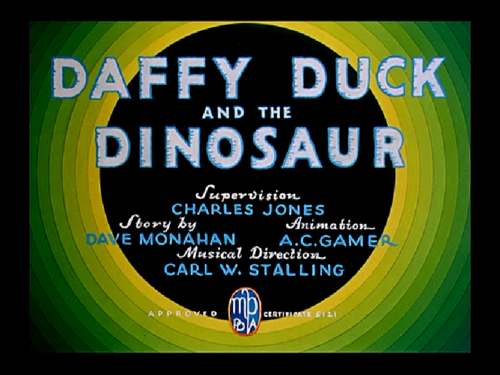Advertisement
Image source: Wikimedia Foundation (wikimedia.org)
Download Movie [Video Format: MP4]
Movie Source: Internet Archive (archive.org)
Advertisement
Advertisement
Japoteurs
1942
You can find more information regarding this film on its IMDb page.
Japoteurs (1942) is the tenth of seventeen animated Technicolor short films based upon the DC Comics character of Superman, originally created by Jerry Siegel and Joe Shuster. The first Superman cartoon produced by Famous Studios (the successor to Fleischer Studios), Japoteurs covers Superman's adventures stopping Japanese spies from hijacking a bomber plane and bringing it to Tokyo. This cartoon does not bear the Famous Studios name because that company had not yet been fully organized after Max Fleischer was removed by Paramount Pictures from the studio which bore his name. The cartoon was originally released to theaters by Paramount Pictures on September 18, 1942.
The word "Japoteur" is a portmanteau of the ethnic slur "Jap" and the word "saboteur".
Plot
The story begins with a shot of the front page of the Daily Planet. The headline reads "World's Largest Bombing Plane Finally Completed." The man reading the newspaper is Japanese, he stands up and looks at a picture of the Statue of Liberty in his office, then pushes a button on his desk, and the picture changes into one of the Rising Sun Flag. He bows to it and jams his glowing cigarette into the news headline. Later, the Japanese man and some acquaintances knock a guard out as the plane is being loaded for a test run. Clark Kent and Lois Lane are taking a tour of the new Bomber for the Planet. When everyone is told to get off, Lois stays behind and hides in a locker on board the plane.As the plane takes off, we see that there are other stowaways aboard. Hidden inside what look like bombs are the Japanese men. The spies tie and gag the pilots and hijack the plane. Meanwhile, Lois emerges from her hiding place and moves over to the cockpit. As she's about to open the door, she notices that the Japanese spies have hijacked the plane. She sneaks into the room and calls for help on the radio, however the spies seize her. In response to her calls for help, fighter planes are sent to stop the hijackers. In response, the hijackers deploy a bomb, which stops the fighters from taking off. Clark Kent goes into an elevator and changes into Superman as it goes up to the roof.
Superman enters the plane to stop the hijackers, but one of them has Lois tied up and is ready to drop her out of the plane through the bomb hatch. Superman jumps out of the plane and comes back in through the bomb hatch to save Lois as she's being dropped. He unties her and starts fighting the hijackers. One of them breaks the plane's controls, and the plane starts falling towards the city. Superman takes Lois out of the plane and places her on the ground, then flies back up and catches the plane, bringing it to a safe landing right in the middle of the street.
Influences
The cartoon, and the stereotypical Japanese characters in particular, are done in a style typical of American propaganda during World War II. Many cartoons of the time followed a similar vein, such as the Warner Bros. Cartoons cartoons Scrap Happy Daffy (1943), Daffy - The Commando (1943), and Herr Meets Hare (1945), to name a few. Such films typically show Japanese and German characters in a negative light as the American hero makes short work of them.The plane catching scene at the end is strikingly similar to a scene in Superman Returns (2006), in which Superman (Brandon Routh) stops an airplane from crashing into a baseball stadium (that resembles Yankee Stadium (1923)) by pressing his weight into the nose and caully lowering it onto the field.
Voice actors
- Bud Collyer as Superman/Clark Kent, Japanese Hijacker
- Joan Alexander as Lois Lane
- Jackson Beck as the Narrator
- Jack Mercer as the Press Tour Guide
See also
Category:Superman animated shorts
Category:1942 films
Category:Aviation films
Category:Japan in fiction
Category:American World War II propaganda films
Category:Fleischer Studios short films
Category:1940s American animated films



